In my opinion, King Oliver doesn’t really receive the credit he is due. He’s all too often treated as a “stop along the way” for Louis Armstrong. Truth be told, he was almost like a father to Louis, and taught him a great deal about playing the cornet. (Louis almost always referred to him as “Papa Joe.”) I’ve just been reading one of the interviews available online from the Hogan Jazz Archive at Tulane University in New Orleans—an interview with Oliver’s wife Stella.
She stated Louis would frequently come to their houses, both in New Orleans and Chicago, for lessons and to eat. Joe was a big man who liked to eat and enjoyed seeing others enjoy their food. Mrs. Oliver mentions Joe knew Buddy Bolden, said he was a fine “faker” (a later term would be “jazzer”) but couldn’t read, which Joe felt was important.
The band Oliver had in New Orleans played dances at Tulane University, and undoubtedly they must have been very good to have had the chance to do that. They would’ve played all kinds of popular tunes, including waltzes, for dancing. However, according to first hand reports, as the evenings wound down, the band would leave the waltzes behind and slow things down with the blues.
It’s funny how certain events in a person’s life can change the course, which happened with Oliver when he was arrested in 1918—along with the rest of his band and the audience—while playing a dance in New Orleans. Joe felt it was a great injustice, for a man just doing his job to be arrested and thrown into jail. After he was released he made arrangements to take a group to Chicago, so he left, along with clarinetist Jimmie Noone, trombonist Honore Dutrey, and a few other players. Oliver never went back despite having offers to play in New Orleans. Obviously he was a sensitive man who was deeply offended.
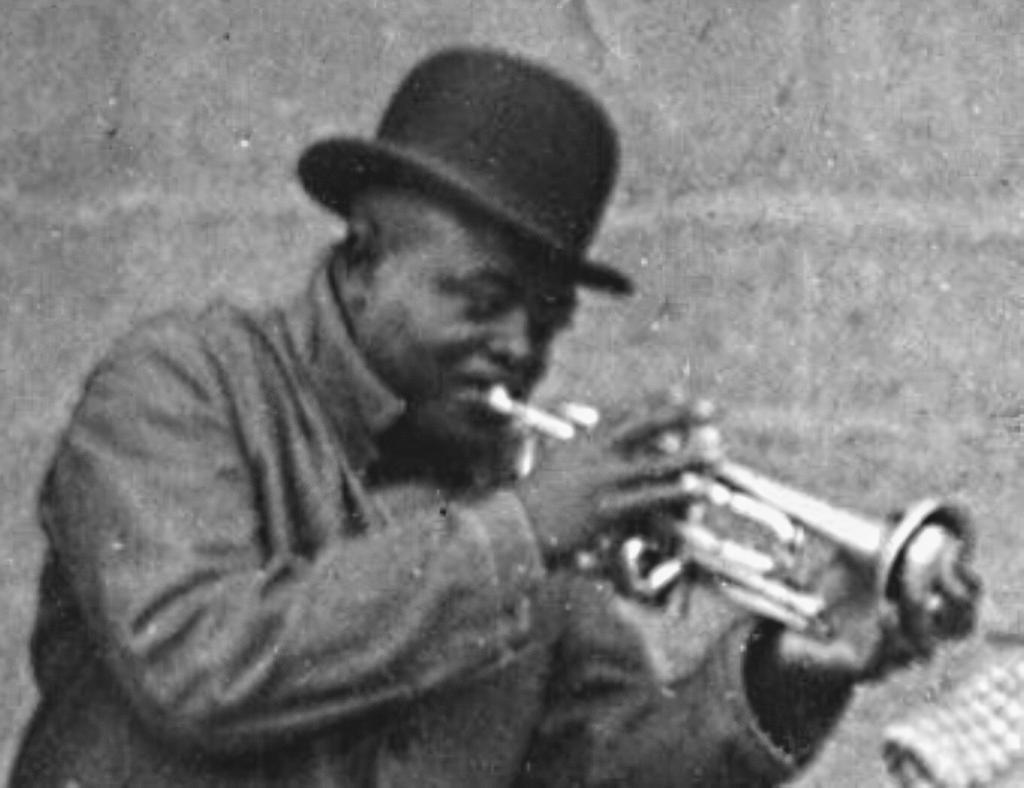
The gigs he played in Chicago—at the Lincoln (aka Royal Gardens), and places such as the Dreamland Ballroom and the Pekin Cafe—caused a whole new generation of musicians to take notice and start playing jazz. Those men are now considered the founders of the Chicago style: Bix, Muggsy Spanier, Frank Teschemacher, Benny Goodman, Jimmy McPartland, Gene Krupa, Dave Tough, et. al. It’s just a real shame that electrical recording didn’t exist in 1923 so we could get a better idea of how swinging Oliver’s band was—with Bill Johnson on string bass and Baby Dodds on drums driving them. Most of the people who heard that band live said the records don’t come near to what the band was like in person.
The sad thing for Oliver was because he didn’t take care of his teeth and drank sugar water, it became increasing difficult for him to play as he did at one time. To my ears, his decline really starts once he formed his bigger band in Chicago, after Louis had left. (It was undoubtedly one of the reasons he sent for Louis to play in his band.) According to guitarist Danny Barker, who knew and worked with Joe, when he took his band to New York people didn’t really dig his music. The people in Chicago, many who came from New Orleans and the South, were a more understanding audience. A similar situation happened with Jelly Roll Morton in New York.
Even though the 1923 records don’t completely capture the sound of Oliver’s Creole Jazz Band, they are fabulous documents of almost entirely ensemble playing. The interplay is incredibly complex, and that type of performance only comes about from working together for a long time and with musicians that understand how a band like that functions. No one has ever been able to replicate the sound of the Oliver band. I can say I tried and even though the results were great and very listenable, it’s just an attempt at replicating something now lost in the wind.
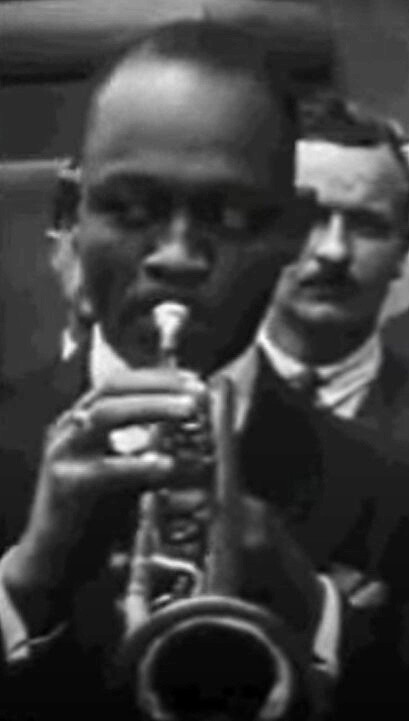
Although Louis was Joe’s main disciple, he influenced other musicians in New Orleans and more in Chicago. In the crescent city, Mutt Carey and Tommy Ladnier were inspired by Joe’s lyrical and driving lead playing, and his use of mutes. Joe was especially fond of a small mute made by C.G. Conn and sold with their cornets until the mid-1920s. These mutes have become known as “doorknob” mutes because their shape is reminiscent of a doorknob, but originally they were just referred to as practice mute—to keep aspiring cornetists from disturbing the neighbors.
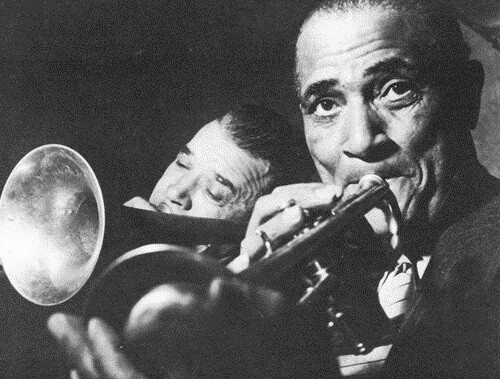
Joe’s technique was to hold this mute partially in the horn, holding it with his thumb and index finger at the top of the bell of the cornet and his other fingers at the bottom part of the bell, which he moved in and out to produce a “wah-wah” effect. He made this particular technique famous by using it on his three choruses on the “Dippermouth Blues.” Many listeners and musicians stated that Joe could “make the horn talk” using this technique. According to eye (and ear) witnesses, Joe used to do a routine on the tune “Eccentric” where he imitated the sound of a baby crying. Bassist Bill Johnson would then say, “Hush baby, hush now” in a bit of a comedy routine.
Joe had another student in New Orleans, a highly trained legitimate cornetist/trumpeter from Italy named Frank Guarente. Guarente was born in 1893 as Francesco Saverio Guarente in Montemiletto, Avellino, Campania, Italy. Guarente arrived in the US on December 5, 1910, heading for Pennsylvania where his brother lived. He established himself with various brass bands and ended up touring with the band of Giuseppe Creatore. They played dates all over the US including New Orleans where, according to some sources, Guarente either fell ill or fell in love with the city.
Whatever the case, for the next six years Guarente called New Orleans his home, and despite the fact he had a “day gig” working as a clerk at the Hibernia Bank, he played a lot of music around town and formed a friendship with Joe Oliver—even, according to some reports, playing his birthday party in 1917. The association worked two ways: Guarente helped Oliver with his reading and other aspects of legit cornet playing, while Oliver shared his jazz expertise—including his trademark mute work.
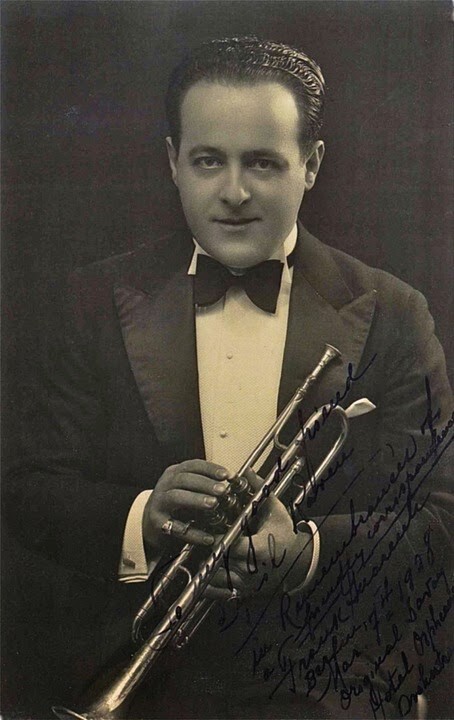
Fast forward to 1922, and Guarente is a member of the dance band of Paul Specht, playing prestigious gigs in New York City and on the East Coast. Specht secures a recording deal with Columbia Records for his “band within a band,” The Georgians, led by Frank Guarente. From The Georgians’ first recordings, Guarente displays a New Orleans-based style in his playing.
A break towards the end of their first recording, “I Wish I Could Shimmy Like My Sister Kate,” reminds me of breaks played by cornetist Freddie Keppard, a musician Joe Oliver worked with in New Orleans. Guarente’s playing on all of the subsequent 41 sides the group cut over the next two years displays his command of the New Orleans trumpet school and his mute work especially echoes that of King Oliver.
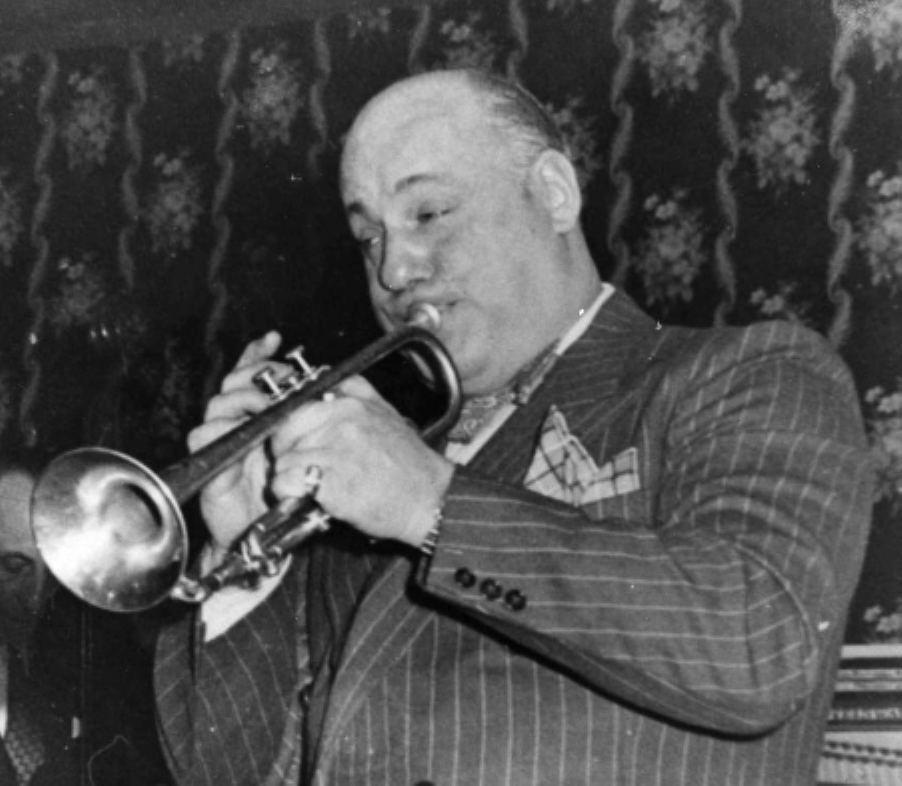
At the same time period in Chicago, trumpeter Paul Mares—from New Orleans—was hailed as one of Oliver’s acolytes, while back in New Orleans a young cornetist with the professional name of—Johnny Wiggs fell under Oliver’s spell, but also admired the young cornetist from Davenport, Iowa— Bix Beiderbecke (yet another Oliver fan).
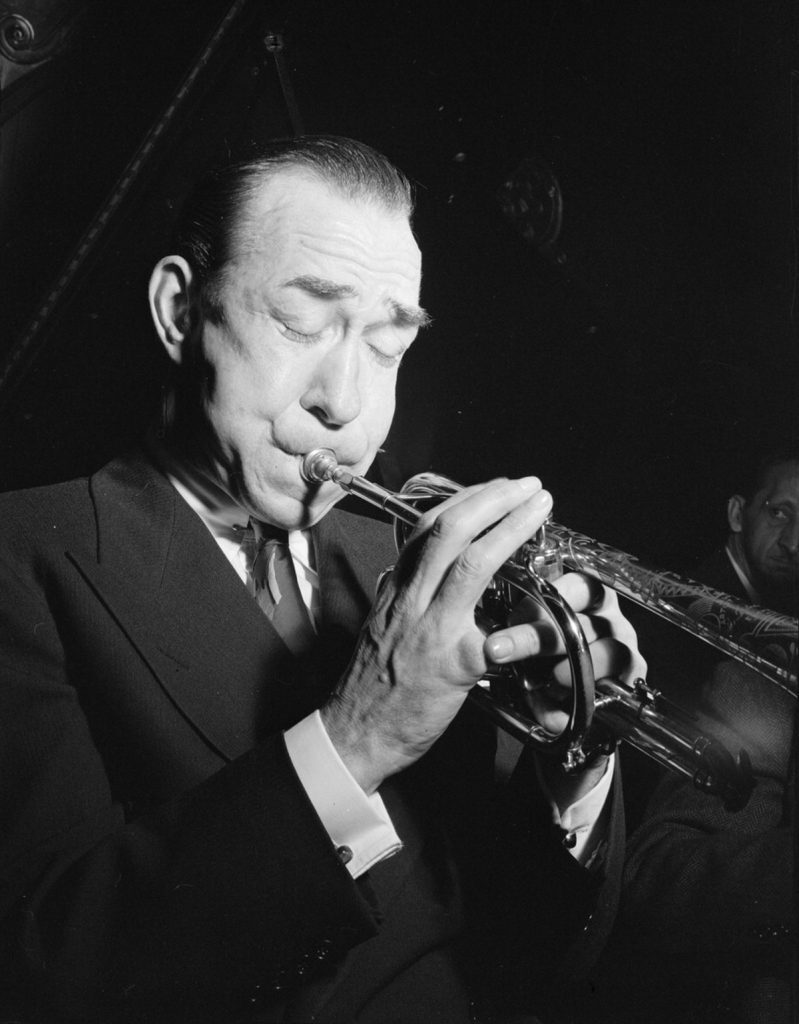
Of the Chicago musicians, Francis “Muggsy” Spanier had the closest relationship with “Papa Joe”; one similar to that of Louis Armstrong. Muggsy was coached by Oliver, and according to an interview in the Hogan Jazz Archive, Spanier was a frequent guest at the Oliver family table and also gave Joe rides home from his gigs. Throughout his life Muggsy displayed the spark and drive learned from listening to Oliver, and never hesitated to honor his mentor. On a 1963 Jazz Casual television program, Muggsy talks about the C.G. Conn mute Oliver gave him, stating, “this is Joe Oliver’s mute” and “if you don’t play it like Joe, it’s not the ‘Dippermouth Blues.’”
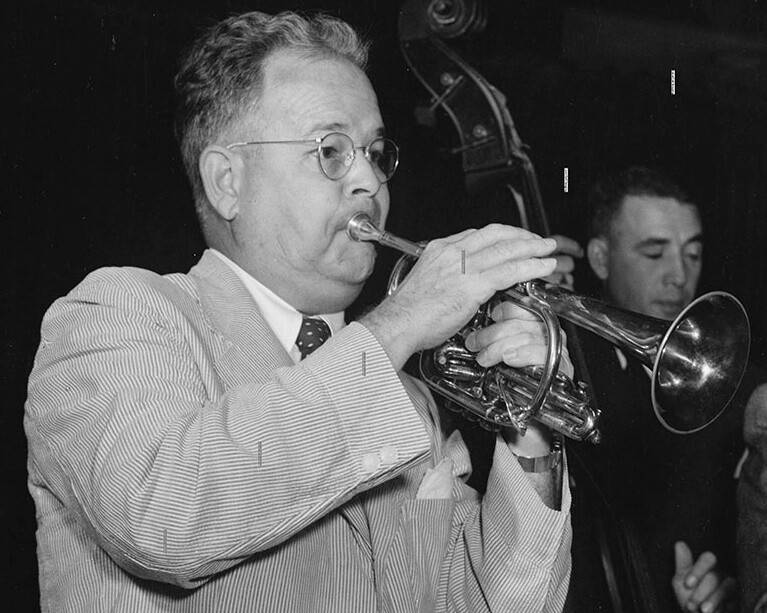
Other Oliver disciples were Bubber Miley, whose mute technique demonstrates a knowledge of Oliver’s on many early Duke Ellington records (and other sessions) and Tommy Dorsey, on the rare occasions he recorded on trumpet. In fact there’s been a controversy
for years whether Dorsey or Oliver is the trumpeter on a session with guitarist Eddie Lang, and although it’s now accepted to be Dorsey, some still believe it to be Oliver.
Joe Oliver demonstrated throughout his career the importance of encouraging younger musicians and giving of himself as a teacher and mentor. When his band was at the Lincoln/Royal Gardens in Chicago, young musicians were allowed to sit in the balcony even if they were under age 21. The doorman would say to them, “here to get your music lessons?” Muggsy, Bix Beiderbecke, Benny Goodman, Jimmy McPartland and other young lions were allowed to sit in with the band, which must have been an incredible honor for them.
I recommend for those who aren’t familiar with the musicians I’ve mentioned look up their recordings on YouTube, (or The Red Hot Jazz Archive) and give them a listen. They’re fabulous examples of the “golden age of jazz” and worthy of not just a casual listen, but careful study. I never tire of them and they’ve been a constant source of inspiration for me for 50 or so years.
Note: For years there has been controversy regarding Joe Oliver’s birthdate. When World War 1 draft cards became available online, it was easy for anyone to look them up for research. According to online sources, these cards are 80 to 90 percent accurate regarding the information on them, as the information was given by the person and then taken down by a US government employee, and on the rare instances when there was a discrepancy it was with the year of birth, not the actual date. These are much more accurate than census records which do frequently have errors. So when Joe stood before the registrar, he gave his birthday as December 19th, 1881, and I believe that was accurate as far as he knew.
Chris Tyle was profiled in The Syncopated Times. Quite a few of Chris Tyle’s recordings and videos are available on YouTube, and there is a “Chris Tyle” YouTube channel. Chris Tyle has also written extensively about jazz history for the website jazzstandards.com.






















